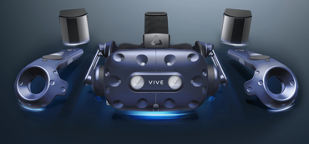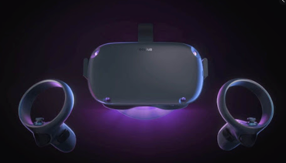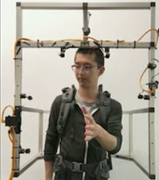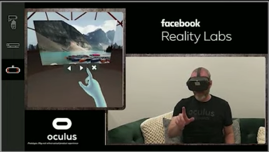Virtual reality has always required some set up. Typically, you’re required to connect a headset and sensors to a high powered computer. Then you need to pair controllers and proceed through a calibration process to ensure that everything is tracked properly.

Tethered Headsets
The vast majority of headsets to date are “tethered”. “Tethering” refers to having to connect the headset to an external computer with cables (typically HDMI or DisplayPort). The tethered headsets appeal to a market that requires high resolution visuals or applications that are computationally taxing (such as having a high number of 3D models in a single scene).
If you want the best visual experience and the most processing power, at the moment you can’t do any better than a tethered headset. However, the “untethered” headsets have been making amazing progress.
Untethered Headsets
The most well-known “untethered” headset is the Oculus Quest. This headset can be used right out of the box with all of the processing and sensing done within the head mounted display. There’s no need to purchase a separate computer or set up external sensors. You can now experience VR quickly anywhere.

Even better, the team at Oculus has trained a computer vision model to track a user’s hands with the intention to ditch controllers all together. It’s exciting to think that you can experience VR just by simply powering on a headset.

Controllers have also been a pain point for VR developers. Each of the different manufacturers has their own layout and shape, relying on developers to correctly map inputs on each controller as well as load the appropriate controller model in their application. All of these issues disappear if hand tracking is perfected and becomes the industry standard.

And best of all, the Oculus Quest can now be optionally “tethered” with a simple USB C cable. With a single cable you now have access to the benefits of both tethered and untethered headsets.
For developers this means you can simply connect the headset to your computer with a single cable and play test your applications.
High quality virtual reality is getting easier and easier to experience and slowly leaving the niche market where it has been incubating. Over the past year it has been exciting to see the consumer market’s reaction to the Quest and the steps toward popularized, wide-spread virtual reality.
The Future of Untethered Headsets?
I'll also continue to keep my eye on remote rendering. This technology is currently being developed by companies such as Microsoft and Google and allows us to render photorealistic worlds in the cloud and no longer rely on the hardware inside our laptops or VR headsets.
This could potentially result in the hardware on the current VR headsets to either shrink or become more tailored to other tasks such as improving their embedded systems for hand tracking or perhaps integrated AR systems for spatial anchors... only time will tell!
